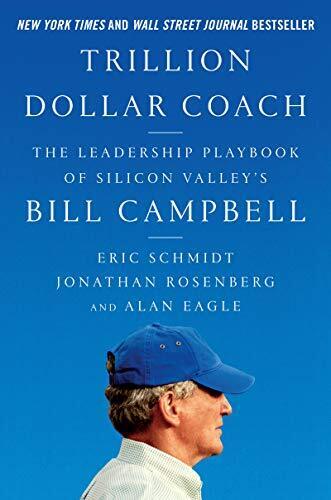
This book is a lovely tribute to Bill Campbell, a famous executive coach in Silicon Valley, and tells you just how amazing he was. Unfortunately, the book doesn’t do as good of a job of helping you become amazing yourself. You learn some of what you need to do, but in many cases, not how to do it.
The book is full of advice that sounds good, but it’s not clear how to act on it. For example, one piece of advice is to “only coach the coachable,” which makes lots of sense, but how do you (quickly) identify who is coachable and who isn’t? Another piece of advice is to “listen actively.” Again, that sounds great, but maybe include some examples on how to do this effectively? The same goes for advice like, “love everyone,” “notice all the small details and nuances,” “show up always,” and so on. Without details on how to accomplish these things, a lot of the advice comes off as platitudes.
And that’s a shame, as the stories about Bill feel mythical; as if Bill had abilities that were almost inhuman or magical. Without clear steps on how to replicate some of Bill’s magic, it can feel discouraging to read these stories, as you start to assume that you’re either born with inate coaching talent, or you’re not, and there’s nothing you can do about it.
Despite the various flaws, there are some useful insights in this book. Here are some of my key takeaways:
1:1s and staff meetings
Bill believed that 1:1 meetings and staff meetings were two of the most important tools available to executives. Above all else, make sure you know how to run these meetings effectively. Note that when dealing with important issues and opportunities, the staff meeting is typically a better forum than 1:1s, as the staff meeting helps everyone see what’s happening in other teams, get good debates going (in fact, staff meetings can be a great way to practice solving problems together), and ultimately, get everyone on the same page.
2. Bill’s framework for 1:1s and reviews
- Performance on job requirements: could be sales figures, product milestones, customer feedback, budget numbers, etc.
- Relationship with peer groups: the relationships between product and engineering, marketing and product, and sales and engineering. Nurturing these relationships is critical for company integration and cohesiveness.
- Management / leadership: are you guiding / coaching your people? Are you weeding out the bad ones? Are you working hard at hiring? Are you able to get your people to do heroic things?
- Innovation: are you moving ahead and thinking how to continually get better? Are you evaluating new technologies, products, and practices? Do you measure yourself against the best in the industry/world?
3. Making decisions
- Chat with all the relevant stakeholders ahead of time so they have enough time to think it through.
- At a meeting, explicitly have each person weigh in with their thoughts.
- The leader should speak last. Let everyone else share their thoughts first.
- As you go around the room, and everyone gives their input, the best idea often emerges, it’s obvious what that is, and everyone goes with it.
- If there’s no obviously best idea, the leader acts as the tiebreaker. Key point: you do not rely on consensus.
4. Letting people go
If you have to let people go, be generous, treat them well, celebrate their accomplishments, and let them leave with their head held high.
As Bill once told Ben Horowitz about a departing executive: “Ben, you cannot let him keep his job, but you absolutely can let him keep his respect.”
5. Don’t tell people what to do
-
“Often, when people ask for advice, all they are really asking for is approval.” When team members ask the CEO for advice, it’s often a prepared question. As a CEO, instead of answering this, ask questions, dig into all facets of the problem, and try to get to the real heart of the issue.
-
As much as possible, avoid telling people what to do, or making decisions for them. Instead, ask questions, offer stories from your own experience, and help guide them to making the best decision.
-
Believe in people, more even than they believe in themselves. Make sure they know you believe in them, raise the bar higher than what they set for themselves, and push them to be courageous.
6. Work the team, then the problem
When faced with a problem or opportunity, the first step is to ensure the right team is working on it. Get the people right first; then start working the problem itself. It doesn’t work in the other order.
7. Leaders lead
When things are going bad, teams are looking for even more loyalty, commitment, and decisivness from their leaders.
There’s a great story in the book where a key team member, referred to as Bob, left a company at a critical, sensitive period. Bill showed up to a meeting and said, “I love you guys. There’s something that’s really bothering me. Bob leaving, he betrayed us. He was disloyal. He left us in our time of need. Fuck him.” And that was it. Bill walked out of the room and left after that short speech. Several minutes later, Bill called the company CEO and said, “I bet no one else is going to quit on you now.”
